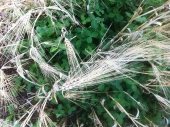
 5
5




 1
1




Forever creating a permaculture paradise!
 3
3




 1
1




Forever creating a permaculture paradise!
 2
2




Argue for your limitations and they are yours forever.
 1
1




 1
1




Invasive plants are Earth's way of insisting we notice her medicines. Stephen Herrod Buhner
Everyone learns what works by learning what doesn't work. Stephen Herrod Buhner

 1
1




How Permies works: https://permies.com/wiki/34193/permies-works-links-threads
My projects on Skye: The tree field, Growing and landracing, perennial polycultures, "Don't dream it - be it! "
 2
2




Michelle Heath wrote:Inoculating was something I knew about but really never considered until this year. I didn't have much luck with lima beans last year as I ended up with two plants out of three plantings and read that inoculant might help. I'm growing fava beans because I'm fascinated that they will tolerate the cold temps (survived 11° with cover last weekend), I want to try them to see if I like them and I was amazed by the nitrogen nodules I've seen growing on other people's favas.
My grandparents never inoculated but they had been growing for years by the time I came into the world. When I applied it to my pea seeds I dampened them, applied inoculant and then shook the container so it would coat the entire seed. It was a bit messy though.
Please keep us updated. Even if I find I don't care for the taste of fava beans, I may continue to grow them as a cover crop.

|
Screaming fools! It's nothing more than a tiny ad:
Learn Permaculture through a little hard work
https://wheaton-labs.com/bootcamp
|




